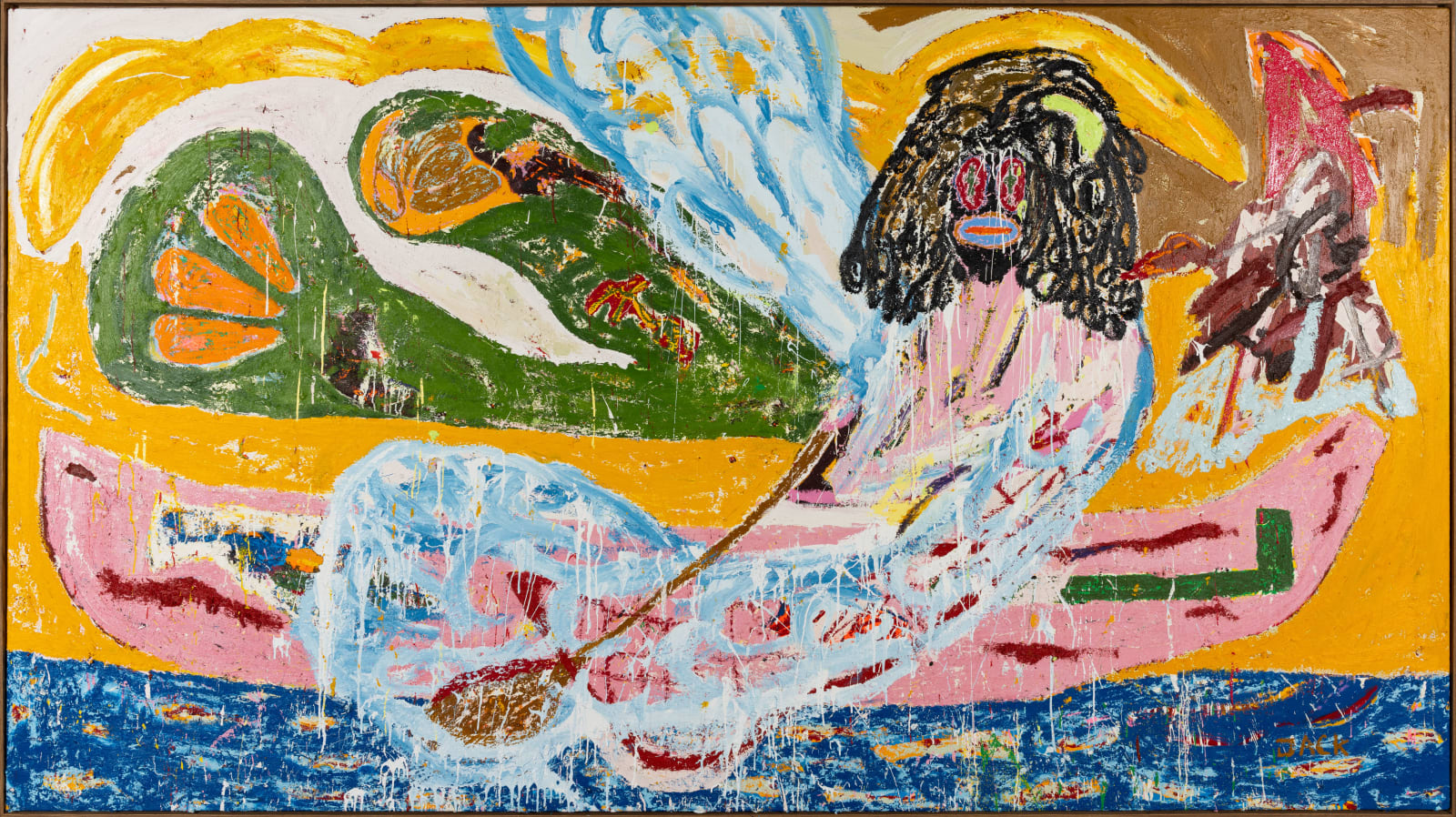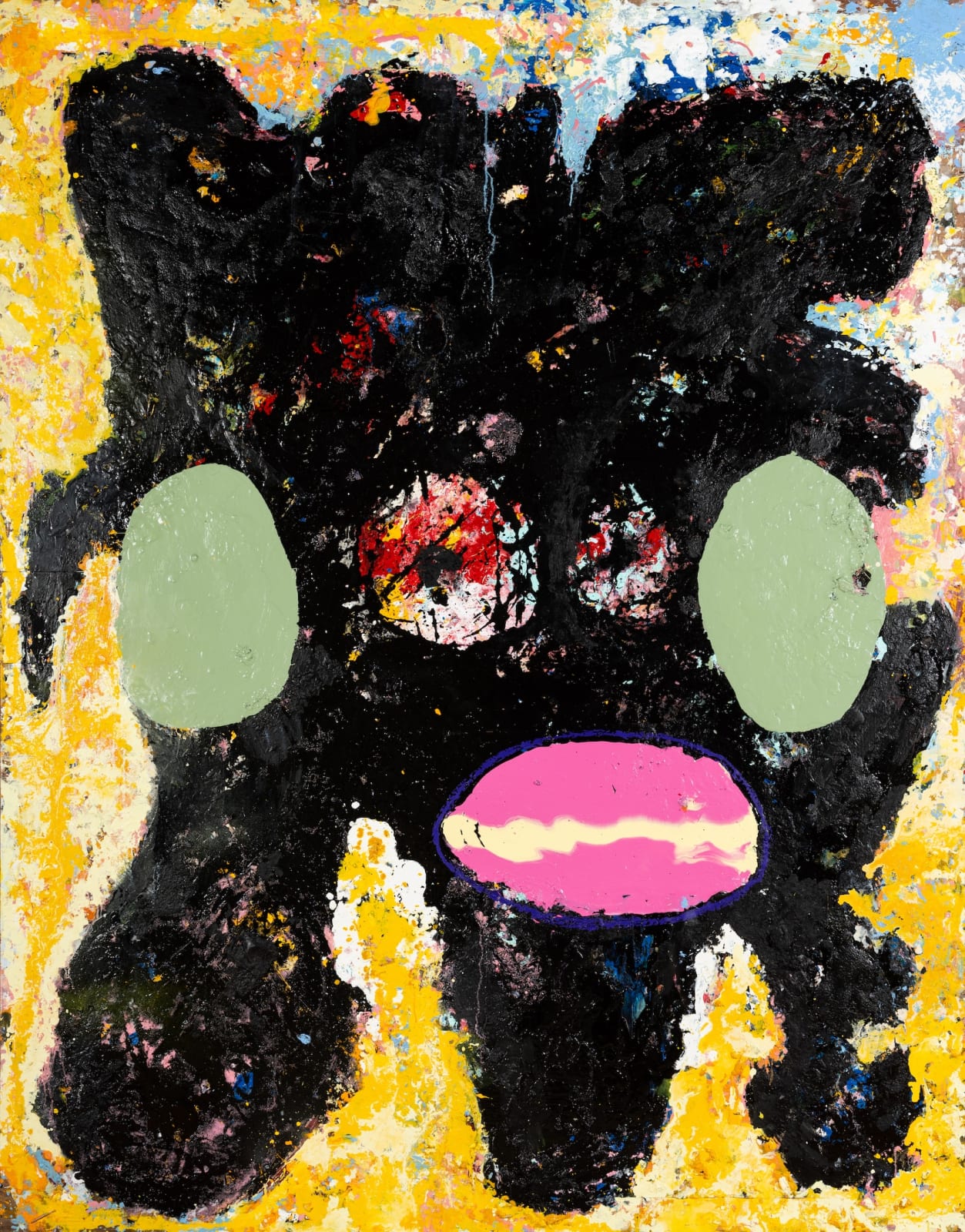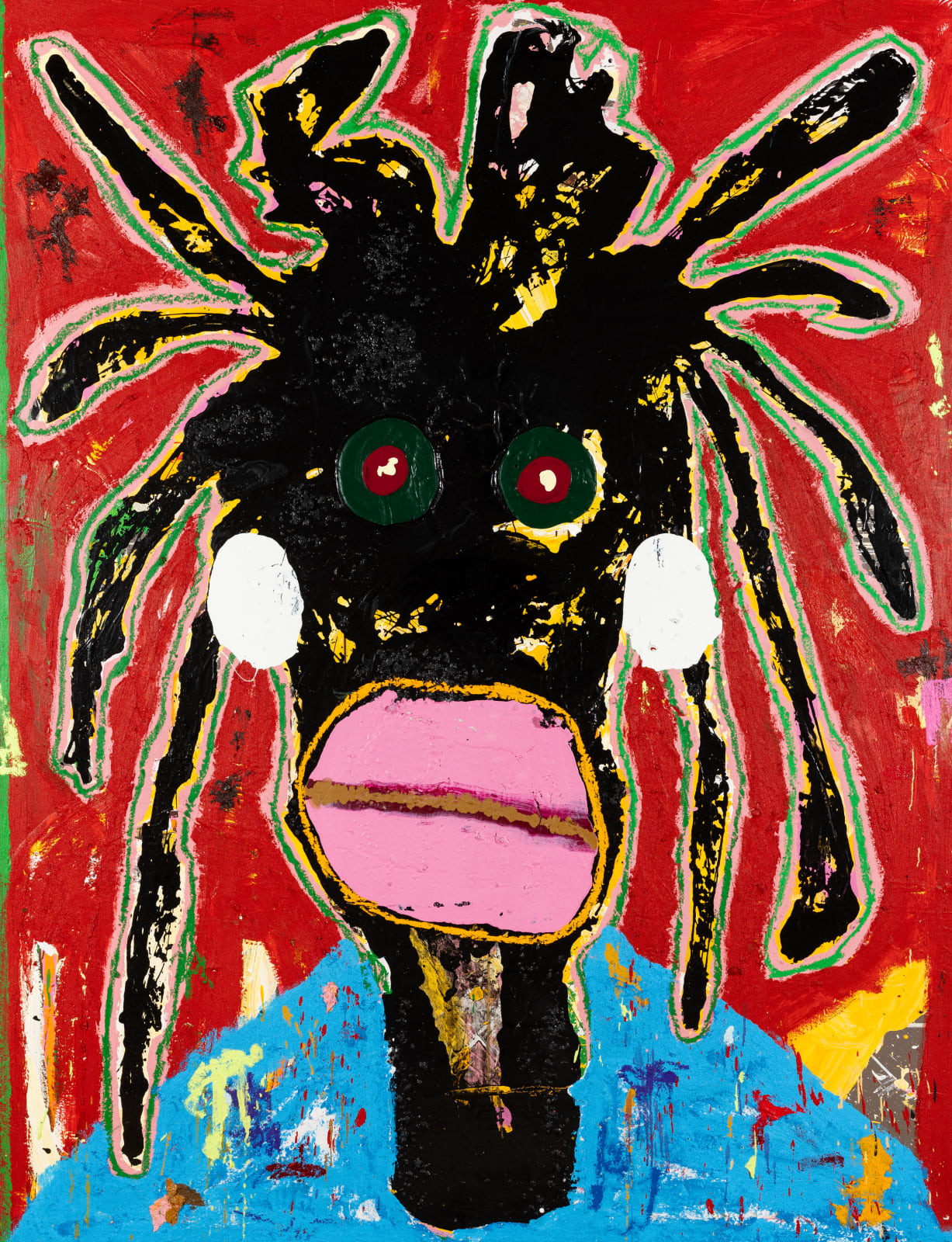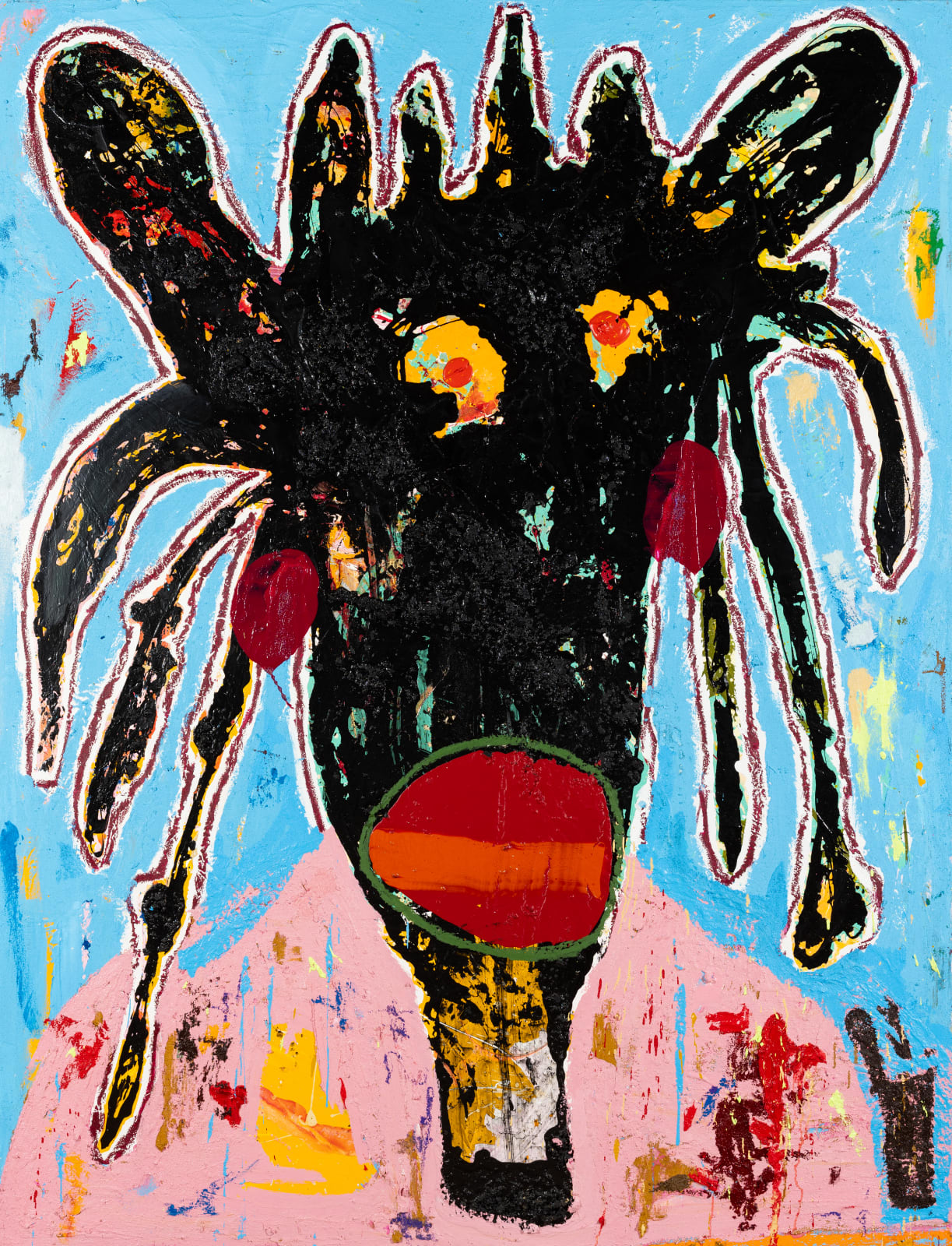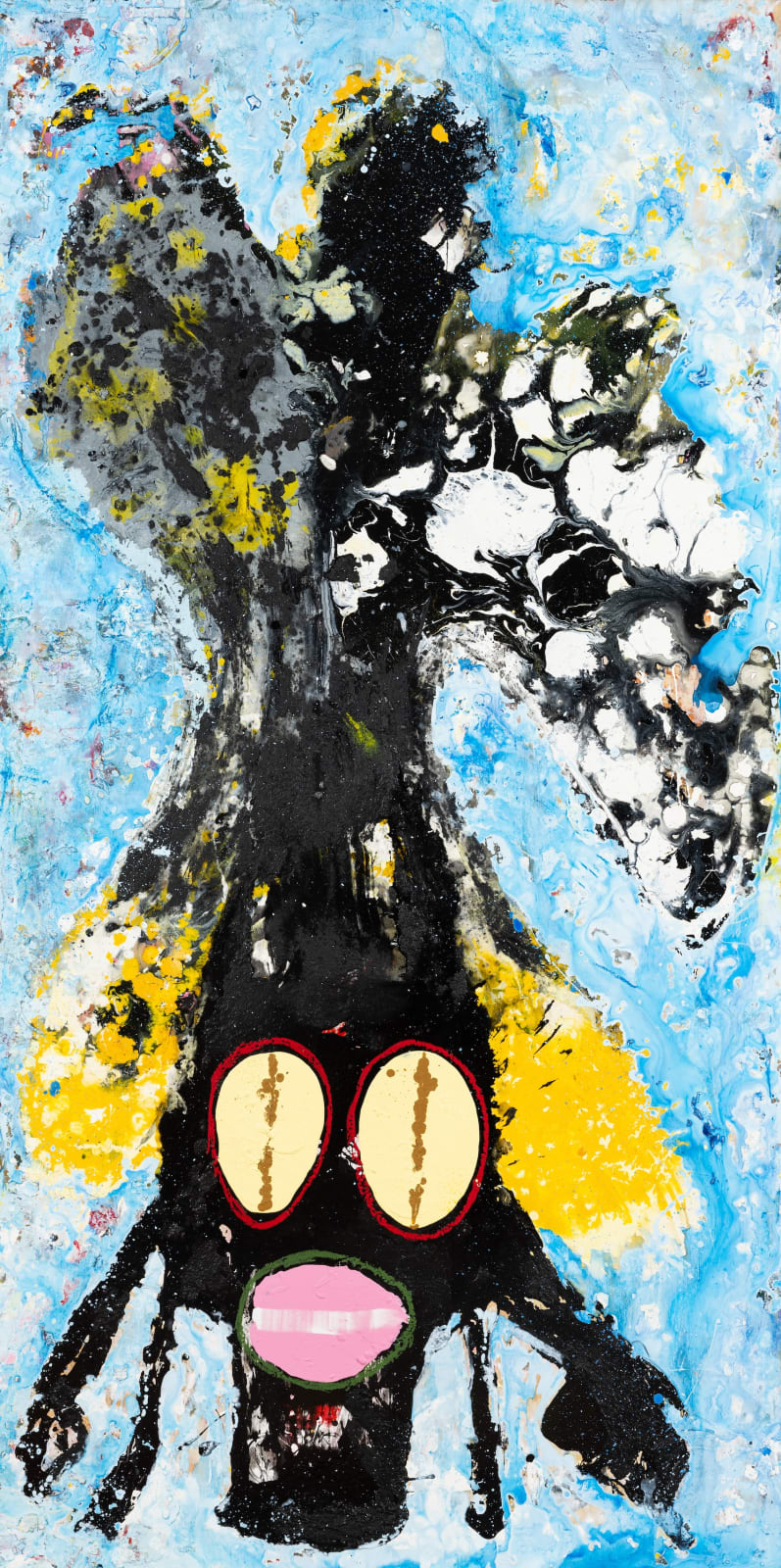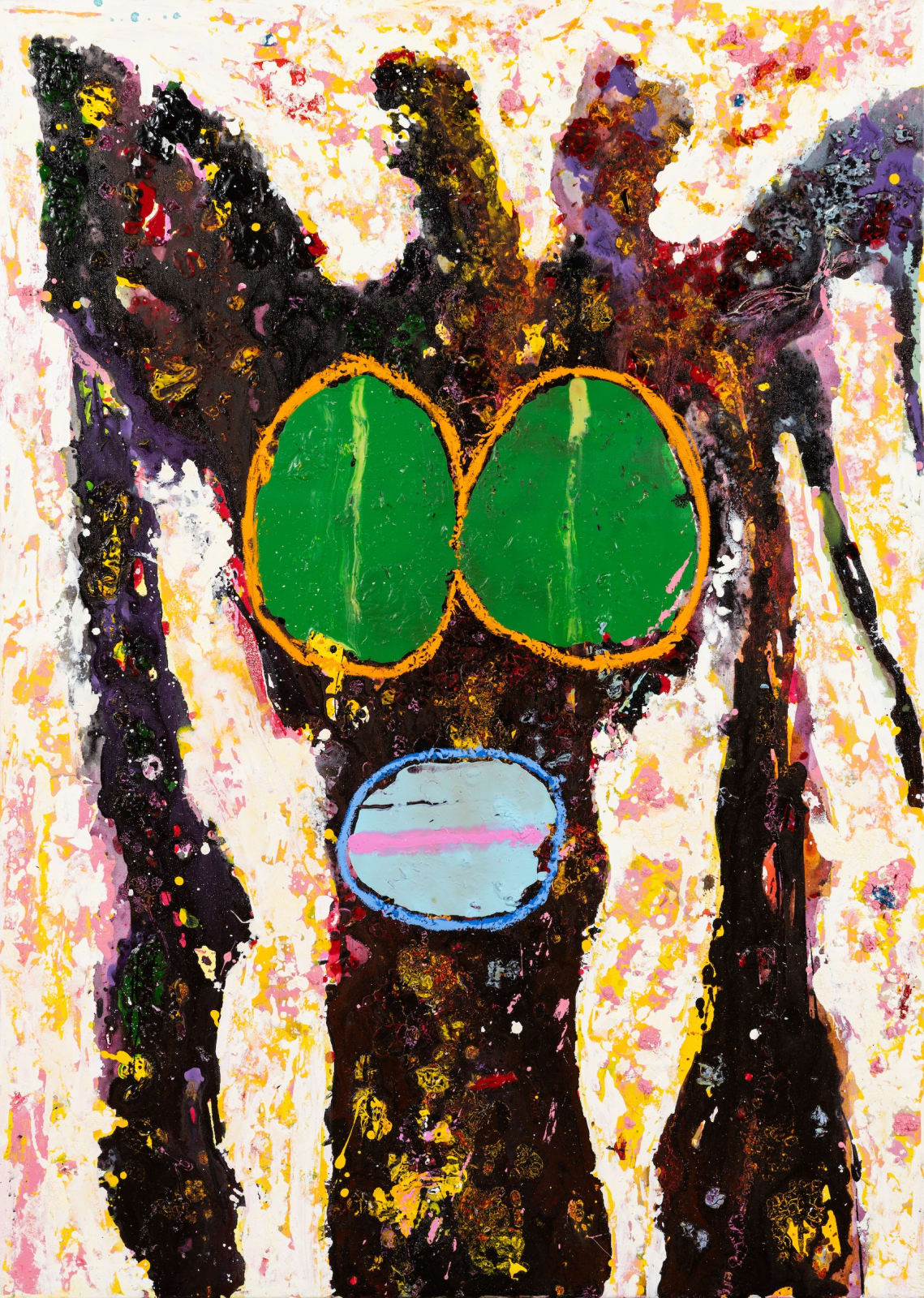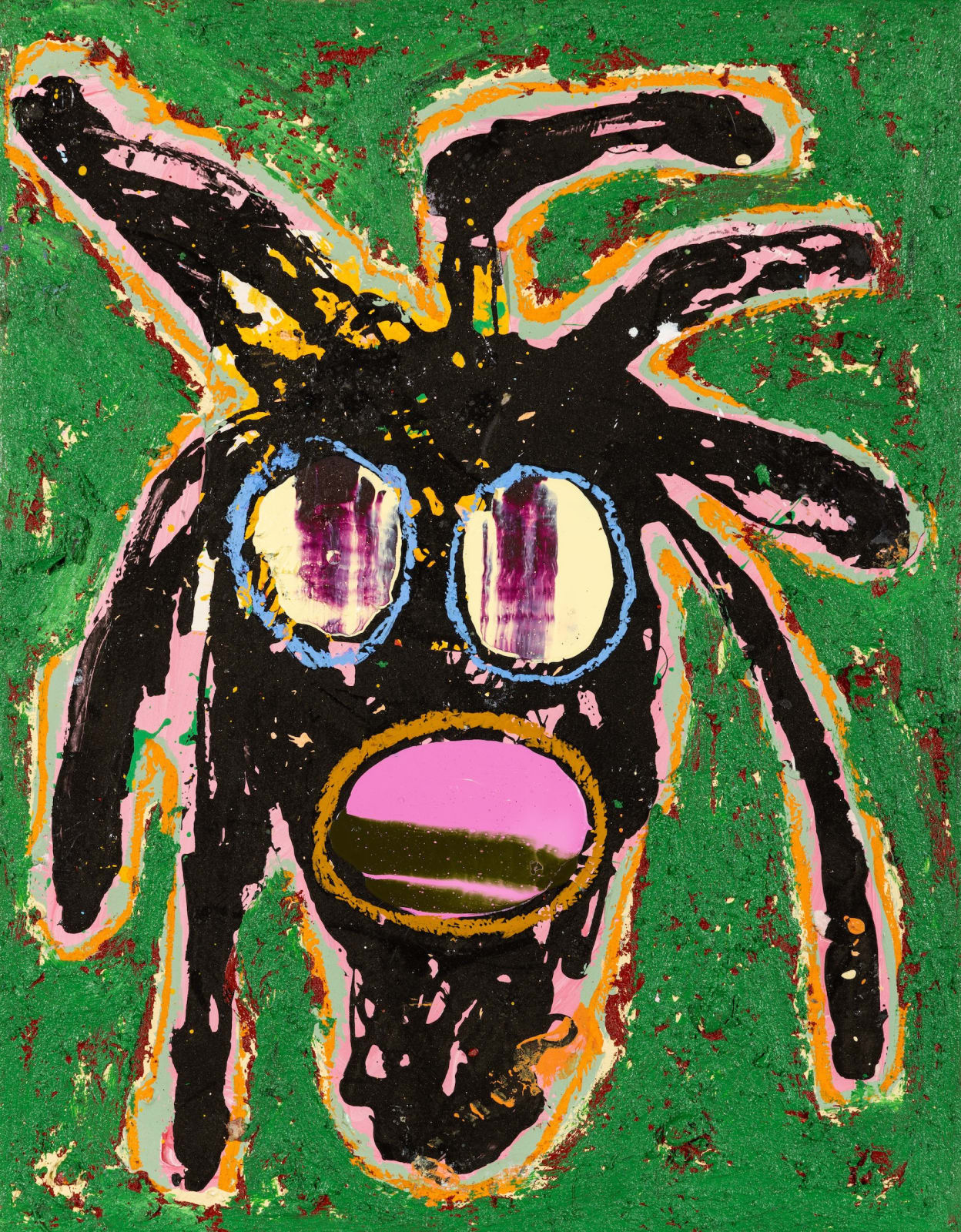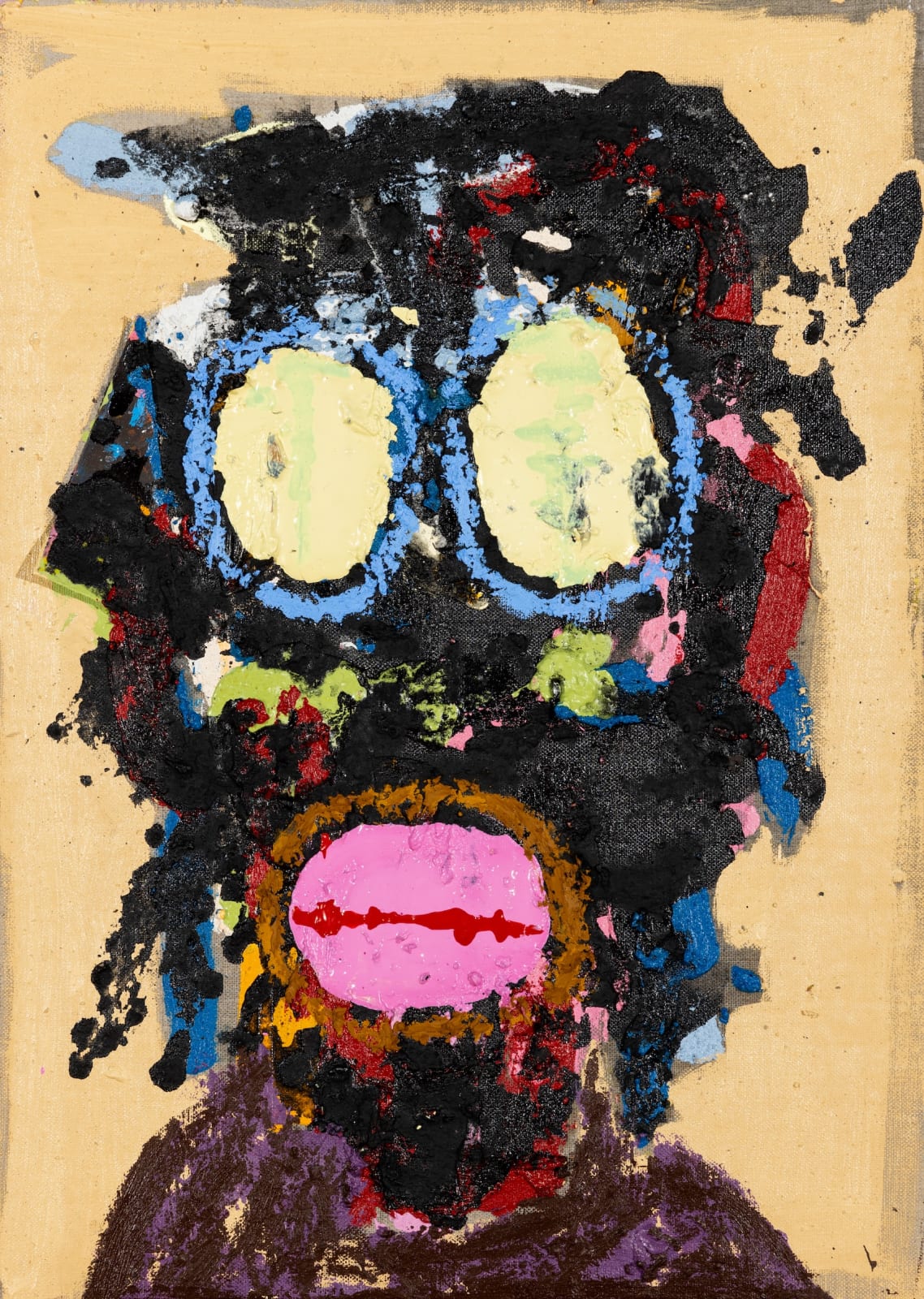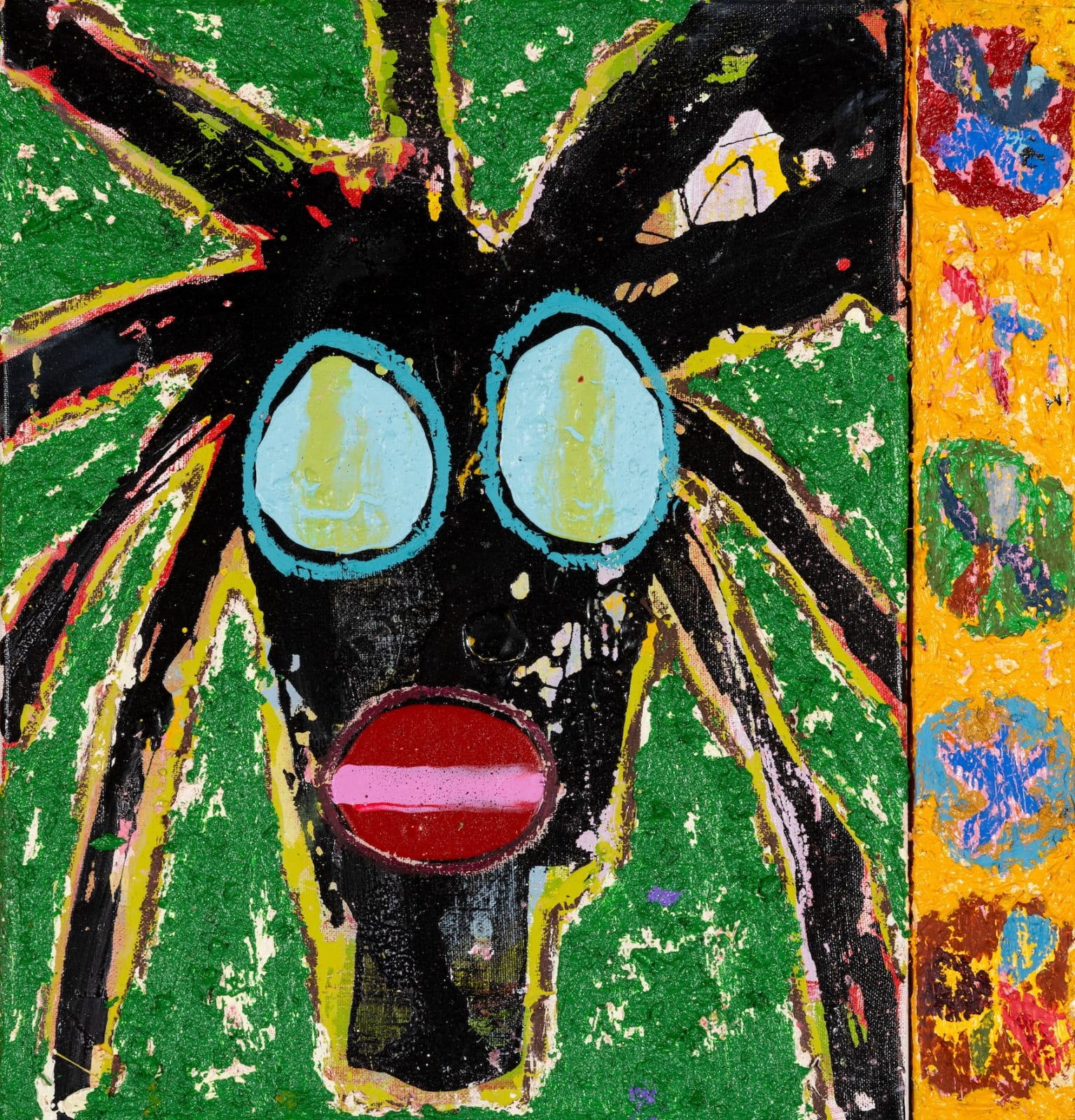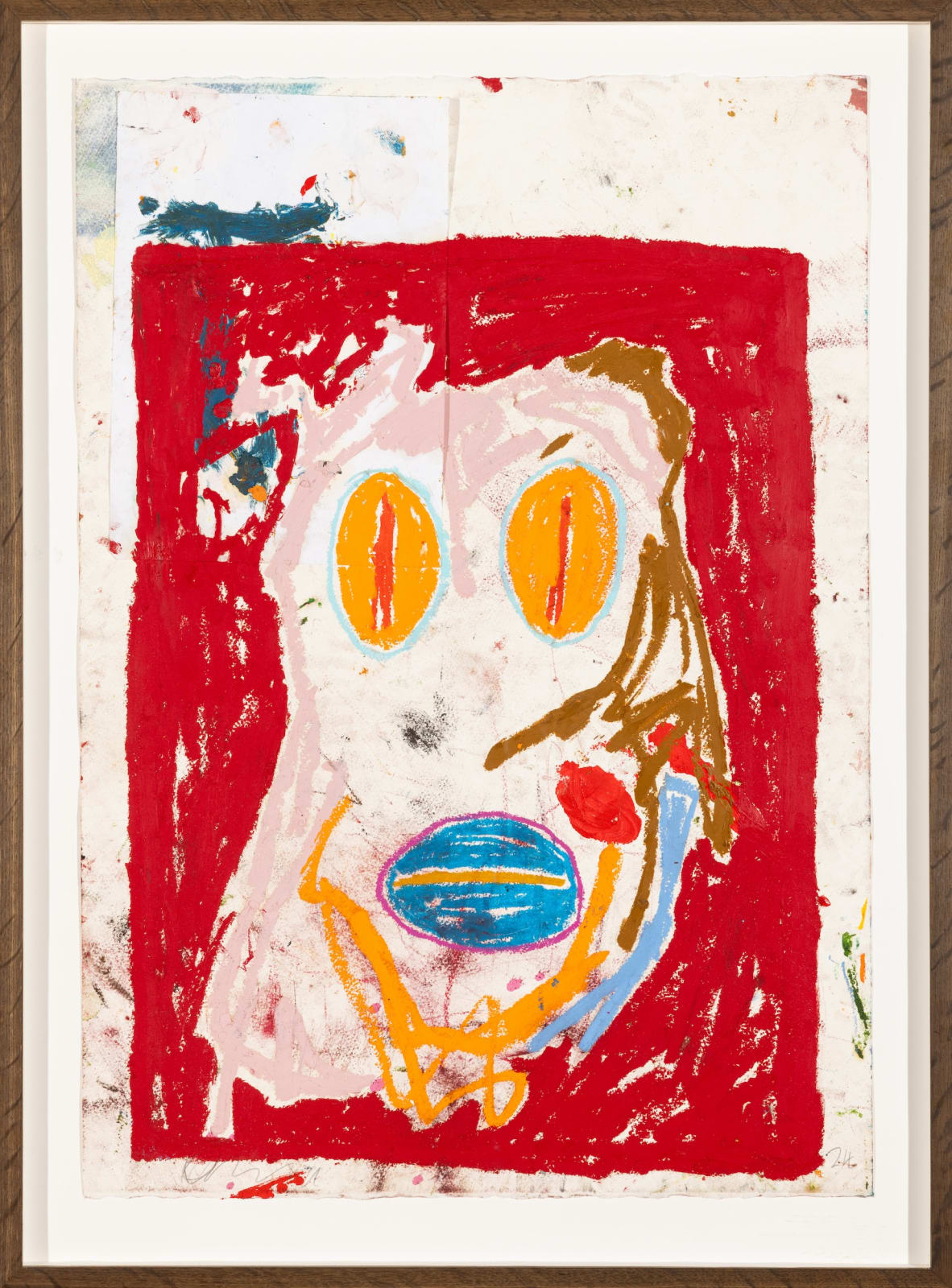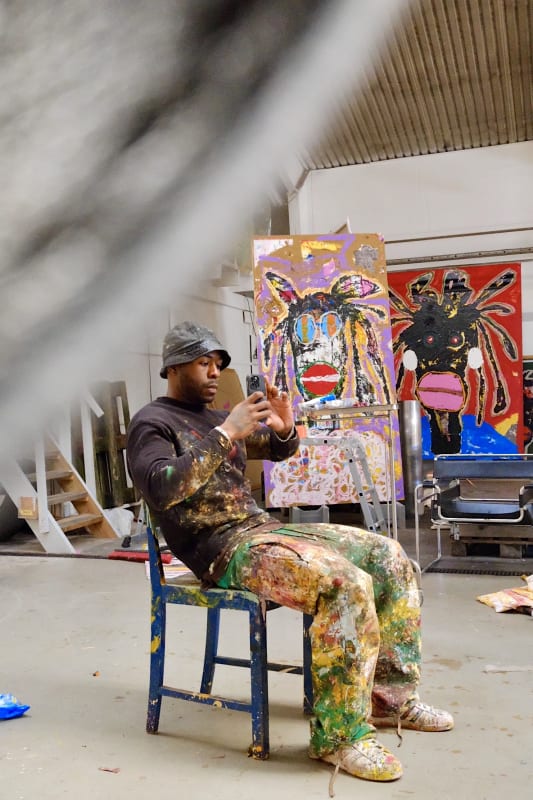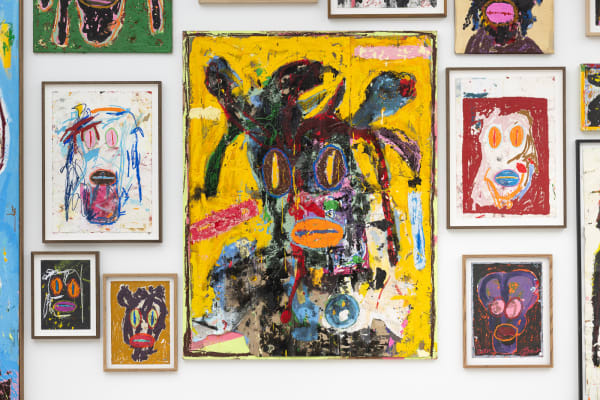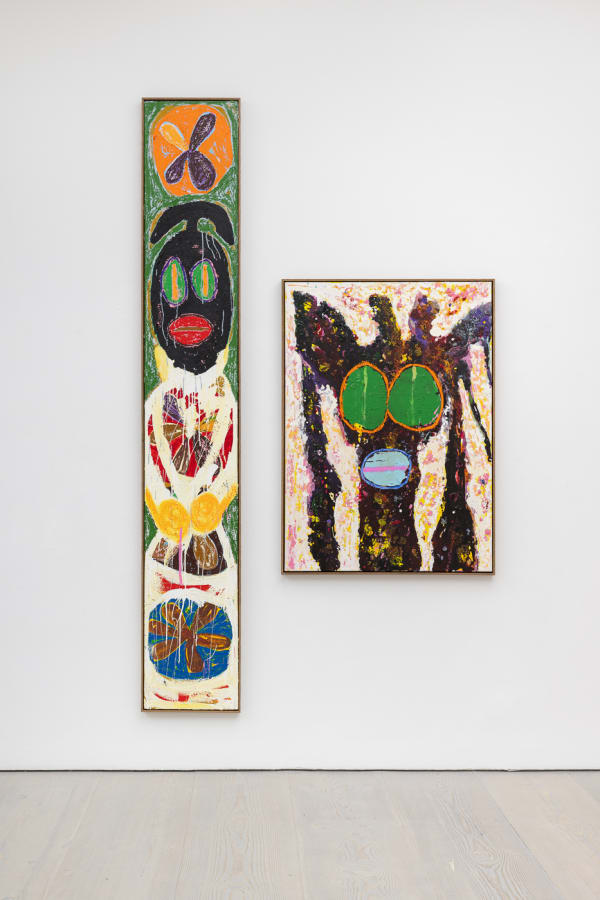JACK KABANGU: BARNDOMMENS DRØMME (CHILDHOOD DREAMS) : @ Saatchi Gallery, (London, UK) Duke of York's HQ
...imagination and sleep and dreaming [are a sign of] heaven right here on earth, a garden of delights you should not wait for, pray for, but life in occupy, and enjoy.
- Rachel Kushner, 'Creation Lake'
Note: This exhibition is a collaboration between BEERS London & Saatchi Gallery. Please note that this exhibition is taking place at Saatchi Gallery located at Duke of York’s HQ, King’s Road, London, SW3 4RY. (Gallery 1)
PDF exhibition catalogue of new works
BEERS London presents Barndommens Drømme (Childhood Dreams) by Jack Kabangu in collaboration with Saatchi Gallery; the African/Danish artist's second solo exhibition in the UK following his sold-out show earlier this year. With this new body of work, Kabangu has scoured his illusory recollection of dreams he recalls having as a child. The exhibition title, which translates to "Childhood Dreams," suggests Kabangu's preoccupation with intangibility: first, the inaccuracy of memory, but also the opacity of our childhood, which for many of us seems preternaturally shrouded in mystery. Kabangu's work is naturally investigative of psychological states; his instantly recognizable style and the recurrent face/visage motif that occurs through his work functions almost as a stand-in (less) for Kabangu himself, but also for a multiplicity of meaning. The face acts like a mirror for us to project and receive an emotional response to Kabangu's work: whether we see angst, fear, rage, or joy depends largely on our interpretation of the face. And the same could be said for the rest of Kabangu's growing symbols and motifs. Kabangu projects images he has resurrected, images deeply rooted in his psyche, and memories of his childhood fears that have become reinterpreted here. This investigation of deeply rooted childhood memory and dream analysis formed the backbone of Sigmund Freud's psychoanalytic processes. Revolutionary for their time, concepts of primal scream therapy and inner rage are less accepted today as legitimate psychological practices, but for an artist like Kabangu, dream analysis presents an endless fount of inspiration.
For centuries artists have looked into their dreams to illuminate their artistic practices. Herodotus wrote that dreams “take their rise from those incidents which have most occupied the thoughts during the day,” and the ancient Greeks and Romans believed dreams told about the past and even foretold the future. The history of art is also typified by scenes of which can be interpreted literally, as visitations from celestial beings, or metaphorically, as attempts to record in waking life those representations of hallucinatory visions of religious fervor. More modern examples include Surrealist artists, like Salvador Dali or Hilma Af Klint, whose dreams and connection to a waking spiritualism provided the foundation for artistic investigation. Authors like Vladimir Nabokov and artist/author Marion Milner created self-imposed trials to record and test their theories that dreams had a powerful ability to interplay with our waking life. Milner's attempts to go challenge her conscious limitations and overcome her artist’s block stem from "a common source or primary phase of experience in which [inner dream and outer perception] are not distinguished, a primary madness which all of us have lived through and to which at times we can return."
And Kabangu joins this illustrious group of thinkers and makers as an artist keen to unify the signs and messages from his youth, but for Kabangu, the inaccuracy, and immateriality of such an attempt creates beautiful fissures where the artist himself - ie, the man he is today, must fill in the blanks left by memory and subconsciousness. From swirling wave-like forms, to floral-inspired mandalas, and phantom-like forms, Kabangu's growth is evident here, as is his recognition as an artist at the ever-moving height of his creative vision. His richly applied surfaces suggest his desire to "go back in" and re-evaluate psychological states in working life, with a brush, almost as a stand-in where language falls short. His colours and technique are here similarly imbued with power, from deep hues and a rigorous, impasto approach to brushwork, we can almost sense Kabangu's desire to return, to "plunge back" to inhabit all worlds we inhabit in part or in full: worlds of dreams, memories, and waking life.
JACK KABANGU (b. 1996, Zambia, Africa) lives and works in Copenhagen, Denmark.
Solo exhibitions include: Home, Galerie Moderne, Silkeborg, Denmark (2024); Smiler Gennem Smerten, BEERS London, London (2024); Being In Love With My Work Is A Gift, But At The Same Time Also A Curse, Jupiter Arms, Miami, USA (2024); Tilgiv Mig Mine Synder, Galleri Christoffer Egelund, Copenhagen, Denmark (2023); The Cabin LA, Los Angeles, USA (2023); The Anzai Gallery, Tokyo, Japan (2023); My Beautiful Ugly Home, Galleri Christoffer Egelund, Copenhagen, Denmark (2022); borgerkrigen (The Civil War), OTI, Hong Kong (2022) and; Aston Martin Copenhagen, Copenhagen, Denmark (2021).
Group exhibitions: Family & Friends, BEERS London, London (2023); Galleri Christoffer Egelund, Copenhagen, Denmark (2022) and; Maddox Gallery, London, UK (2022).
Fairs include: ENTER ART FAIR, Galerie Moderne, Copenhagen (2024); Herning Art Fair with Galerie Moderne Silkeborg, Herning, Denmark (2024); Untitled Miami Beach with Makasiini Contemporary (2023); CAN Art Fair with Anna Zorina Gallery, Ibiza, Spain (2023); Herning Art Fair with Galerie Moderne Silkeborg, Herning, Denmark (2023) and; Art Fair Tokyo with The Anzai Gallery, Tokyo, Japan (2023).

